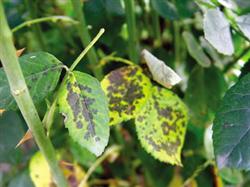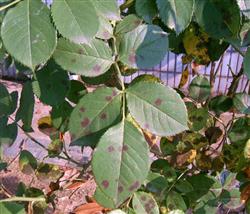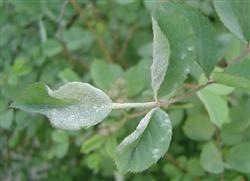How to control rose diseases and insect pests

The most common diseases of rose are powdery mildew, black spot, branch blight, rust and so on. Dozens of insect pests may occur, the most common of which are shell insects, aphids, red spiders, thrips, stinging moths, saw leaf wasps and so on. In view of the above diseases and insect pests, we should step up efforts to prevent and control them. Pruning should also be carried out during the dormant period. The pruning time is around the Spring Festival, mainly to cut off disease and insect branches, withered branches, weak branches, overlapping branches and cross branches from the base of large roses that have been more than 2 years old. In addition, different degrees of pruning are carried out according to the varieties, characteristics and growth conditions of the rose: only 2-3 main branches are retained for plants with poor growth, which can be cut off by 2x3; for varieties with normal growth, normal plant type and frequent flowering, about 1x2 can be cut off; for plants with strong growth and frequent flowering, only 1x3 can be cut. Apply the healing film to the wound caused by pruning to promote the wound healing as soon as possible and prevent the invasion of diseases and insects. Soil sterilization: soil is not only the main medium for the spread of diseases and insect pests, but also the main place for the reproduction of diseases and insect pests. Sterilization before planting is the primary method to control this kind of diseases. The common methods of soil sterilization are steam disinfection, chemical fumigation such as methyl bromide, Weibai mu and so on. Pay attention to field hygiene: potted rose should pay attention to maintaining good indoor ventilation and dry leaves, do not splash water and fertilizer on the leaves when watering and fertilizing, and avoid watering. Irrigation in the field should be timely and appropriate to avoid all kinds of rhizome diseases caused by excessive humidity or stagnant water in the field. Timely removal of weeds inside and outside the shed, do not provide overwintering places for pests. At the same time, it was treated with chemicals and sprayed with new high-fat membrane to control the further spread of the disease. It is found that a rose has black spot and powdery mildew, please isolate, pinch off the diseased leaves and destroy them, so as to prevent transmission to other plants. Strengthen facility management: regularly check the isolation measures of greenhouse to control the invasion of pests; greenhouse should have adequate ventilation and dehumidification capacity; reasonable irrigation system to avoid wetting plants; timely cleaning of greenhouse film, timely ventilation and moisture discharge with temperature changes. Chemical control: when using chemical pesticides, fumigation (sulfur fumigation, smoke fumigation) should be used as far as possible, and pesticides that are not easy to leave stains should be selected as far as possible when spraying. Pesticides should be sprayed below 20 cm of the plant to avoid direct pollution of cut rose. Cut rose is sensitive to propargite and pyrethroid pesticides and is prone to drug damage, so it should be used cautiously in prevention and control.
- Prev

How to skillfully remove the black spots of rose
Black spot is one of the most common and destructive diseases in various places. It mainly infects leaves, as well as twigs, petioles, flowers, peduncles, buds and flowers. The disease spots on the twigs are long oval at first, dark purplish red, and slightly sunken. The spots on the pedicel are smaller. When the temperature rises to about 25 ℃, the air humidity is close.
- Next

How to prevent and cure powdery mildew of cut rose
Powdery mildew is one of the most important diseases of rose, which harms leaves, tender shoots, buds and pedicels. The control methods are as follows: strengthening cultivation management and timely removal of the disease; pruning in time to improve ventilation and light transmission conditions; nitrogen fertilizer should not be too much, it is necessary to increase the application of phosphorus and potassium fertilizer. 15% can be sprayed to prevent and cure the disease during the growing period.
Related
- Fuxing push coffee new agricultural production and marketing class: lack of small-scale processing plants
- Jujube rice field leisure farm deep ploughing Yilan for five years to create a space for organic food and play
- Nongyu Farm-A trial of organic papaya for brave women with advanced technology
- Four points for attention in the prevention and control of diseases and insect pests of edible fungi
- How to add nutrient solution to Edible Fungi
- Is there any good way to control edible fungus mites?
- Open Inoculation Technology of Edible Fungi
- Is there any clever way to use fertilizer for edible fungus in winter?
- What agents are used to kill the pathogens of edible fungi in the mushroom shed?
- Rapid drying of Edible Fungi

